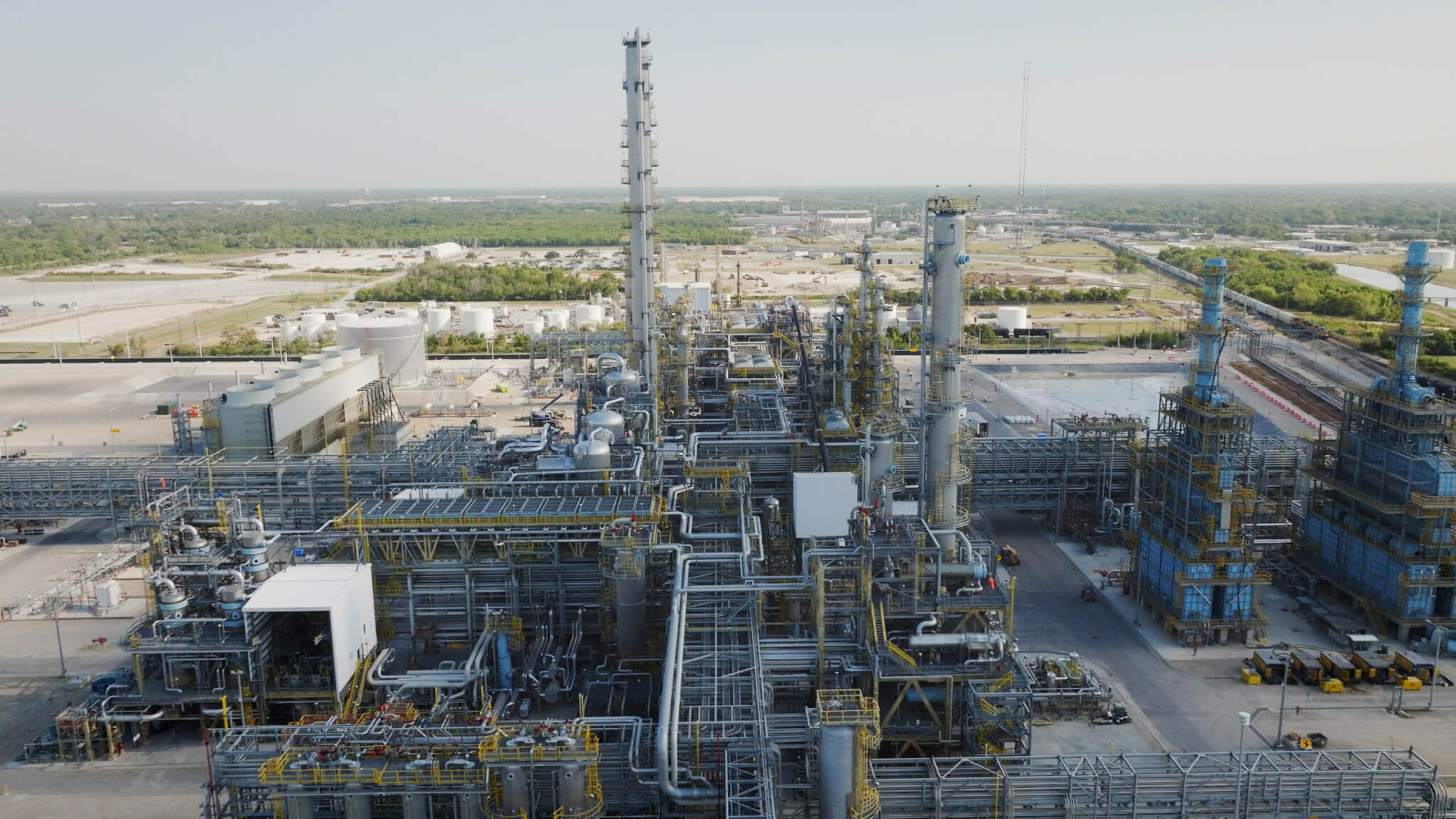
ExxonMobil has taken a significant step in advancing its low-carbon energy initiatives by selecting Worley to provide engineering, procurement, and construction (EPC) services for its ambitious blue hydrogen and ammonia facility in Baytown, Texas.
This project, poised to become the world’s largest low-carbon hydrogen plant upon completion, represents a monumental leap forward in sustainable energy production.

>> In Other News: SunHydrogen Completes 1m² Green Hydrogen Panel Demonstration
A Game-Changing Collaboration
The Baytown facility is designed to produce up to 28.3 million cubic meters of low-carbon hydrogen daily and nearly one million tonnes of ammonia annually.
These figures underscore its potential to redefine the global blue hydrogen landscape.
With operations targeted for a 2029 start, this cutting-edge project is being closely monitored for its transformative impact on both the environment and the energy market.
Worley’s CEO, CHRIS ASHTON, expressed excitement about this partnership: “We’re delighted to continue our strategic, global relationship with ExxonMobil in its execution of upcoming projects, particularly in delivering this EPC project on the US Gulf Coast, which contributes significantly to strengthening Worley’s backlog.”
What Makes the Baytown Facility Unique?
At the heart of the Baytown project is ExxonMobil's commitment to scaling up low-carbon energy solutions.
The facility will employ advanced technologies to capture carbon emissions during hydrogen production, ensuring its output aligns with sustainability goals.
Blue hydrogen, produced by reforming natural gas with carbon capture, has become a focal point for energy transition strategies worldwide.
Strategic investments by companies like ExxonMobil highlight the industry's shift toward cleaner energy production, with blue hydrogen emerging as a cornerstone of this transformation.
The Baytown plant’s sheer scale and cutting-edge technology place it at the forefront of these efforts.
>> RELATED: ExxonMobil Secures Largest CO2 Offshore Storage Site in the U.S.

The Role of Key Stakeholders
Worley’s involvement is a testament to the engineering company’s expertise in delivering large-scale infrastructure projects.
The contract, however, remains contingent on crucial milestones, including a final investment decision (FID), supportive government policies, and regulatory approvals.
ExxonMobil has also attracted other prominent players to this venture. Earlier this year, Mitsubishi Corporation and ADNOC acquired stakes in the Baytown facility, signaling global interest in the project.
Mitsubishi’s investment reflects Japan’s ambition to secure a stable hydrogen supply, while ADNOC’s participation aligns with its strategy to diversify energy exports.
Blue Hydrogen’s Growing Significance
Blue hydrogen is gaining traction as a key driver in the transition to cleaner energy, particularly in regions like the United States.
According to research by consultancy Wood Mackenzie, the US is expected to solidify its leadership in blue hydrogen production by 2025.
The successful launch of projects like Baytown would establish the US as a global hub for low-carbon hydrogen, with the nation already boasting the largest post-FID blue hydrogen capacity worldwide.
If Baytown and other initiatives achieve financial closure, the total production capacity could exceed 1.5 million tonnes per year, further cementing the country’s leadership in this sector.
Anticipated Challenges and Milestones
Despite its promise, the Baytown project faces significant hurdles, including navigating regulatory landscapes and securing policy support.
The project's approval will likely depend on ExxonMobil’s ability to demonstrate its environmental benefits and long-term feasibility.
The involvement of multiple stakeholders and the need for synchronized decision-making add layers of complexity.
Still, the collaboration between industry giants like ExxonMobil, Worley, Mitsubishi, and ADNOC suggests a shared commitment to overcoming these challenges.
A Vision for the Future
ExxonMobil’s Baytown facility represents more than just a technological milestone; it is a symbol of industry-wide efforts to combat climate change through innovative energy solutions.
As nations and corporations rally around decarbonization, projects of this scale offer a blueprint for a cleaner, more sustainable future.
CHRIS ASHTON emphasized the broader significance of this endeavor, stating: “Delivering this project not only strengthens Worley’s position in the market but also aligns with our mission to support global energy transition initiatives.”
As the world watches the Baytown project take shape, its success could redefine what is possible in low-carbon energy production, paving the way for further innovation in the field.
For more information about ExxonMobil’s energy initiatives, visit ExxonMobil’s website. To learn more about Worley’s engineering expertise, check out Worley’s website.
Subscribe to the newsletter
Daily decarbonization data and news delivered to your inbox
Follow the money flow of climate, technology, and energy investments to uncover new opportunities and jobs.
Companies
Latest issues
-
$213 Per Tonne: Inside the Latest Multi-Pathway CDR Deal
Inside This Issue 💸 $213 Per Tonne: Inside the Latest Multi-Pathway CDR Deal 🏛️ Clean Energy Technologies Affiliate Vermont Renewable Gas Advances Regulatory Review 💧 Fusion Fuel’s BrightHy Soluti...
-
The Three-Continent Move That Redefines SAF
Wishing everyone a restful holiday season.🎄🎅🎁 Inside this Issue ✈️ Cathay Goes Global With SAF in Three-Continent Fuel Deal 🧪 Proton Ventures Partners With Barents Blue For Realization Of The Bar...
-
Can One Truck Fix Hydrogen’s Biggest Problem?
Inside This Issue 🚛 Alberta's Shared Truck Model Could Crack Hydrogen Adoption ✈️ ZeroAvia Completes Financing Round 🌾 Frontier And NULIFE Scale New Biowaste Carbon Removal Approach 🔥 WAGABOX® Of ...
Company Announcements
-
Deployment of up to €30 million of Partner-committed capital, to be released over time in three potential tranches of €10 million each. First project expected to be a green hydrogen production...
-
Clean Energy Technologies Affiliate Vermont Renewable Gas Advances Regulatory Review
IRVINE, CA., Dec. 29, 2025 (GLOBE NEWSWIRE) -- Clean Energy Technologies, Inc. (Nasdaq: CETY) (“CETY” or the “Company”), a clean energy technology company delivering scalable solutions in power gen...
-
Production Milestone at Beaumont New Ammonia
HOUSTON -- The Beaumont New Ammonia (BNA) facility, located in southeast Texas, has produced first ammonia following the completion of systems testing, representing the first phase of operations co...
-
ClimeFi Announces New 85,000 Tonne Procurement Round
In its latest procurement round, ClimeFi has enabled more than US$18m in durable carbon removal purchases across eight removal pathways: Biochar, Bioenergy with Carbon Capture and Storage (BECCS), ...
